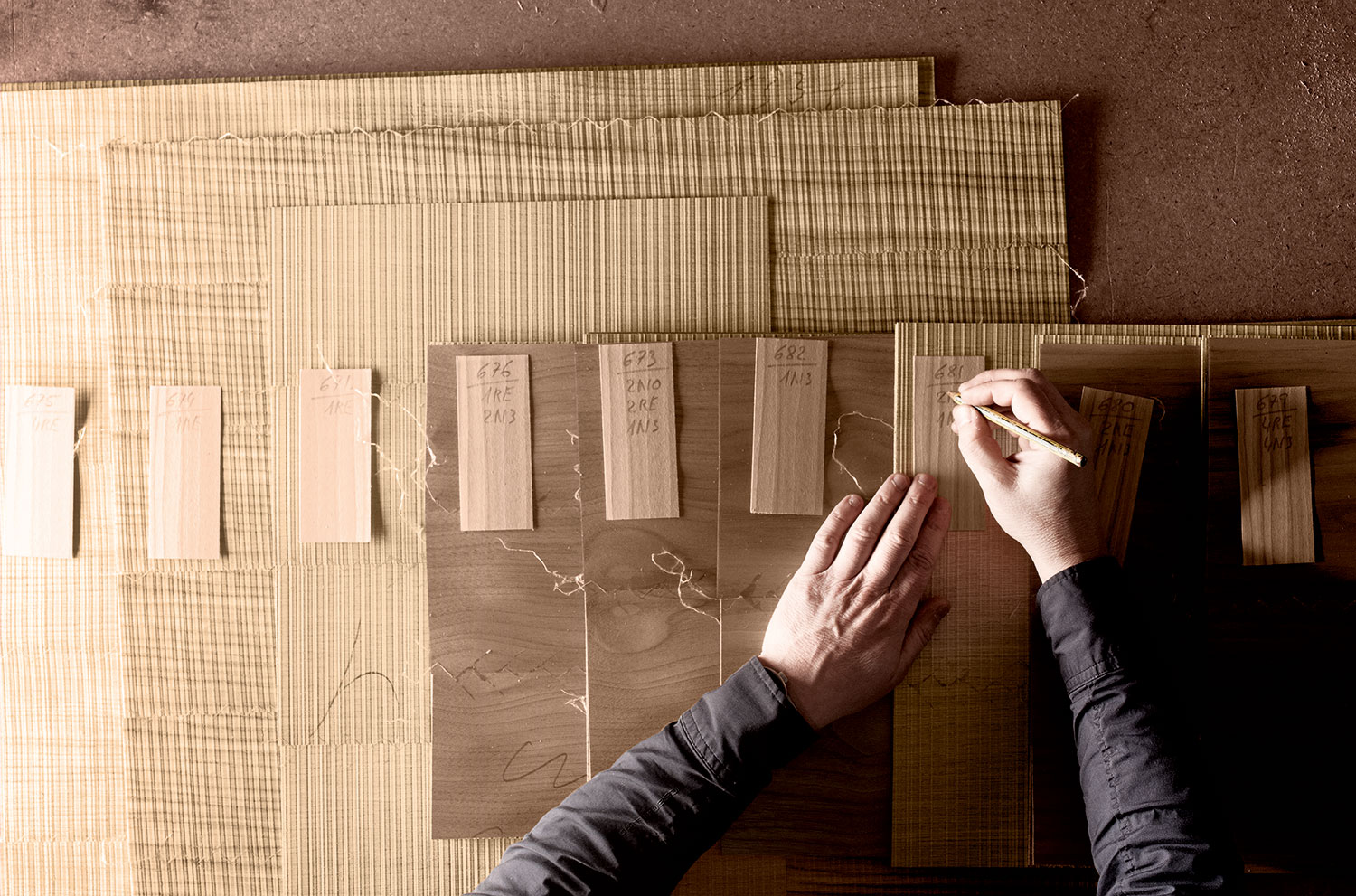Salone del Mobile, Milano
PHOTOGRAPHY:
Yosuke Kojima
We appreciated your positive feedback about our collection presented at the last Salone del Mobile in Milan! Check out some pictures of our booth.
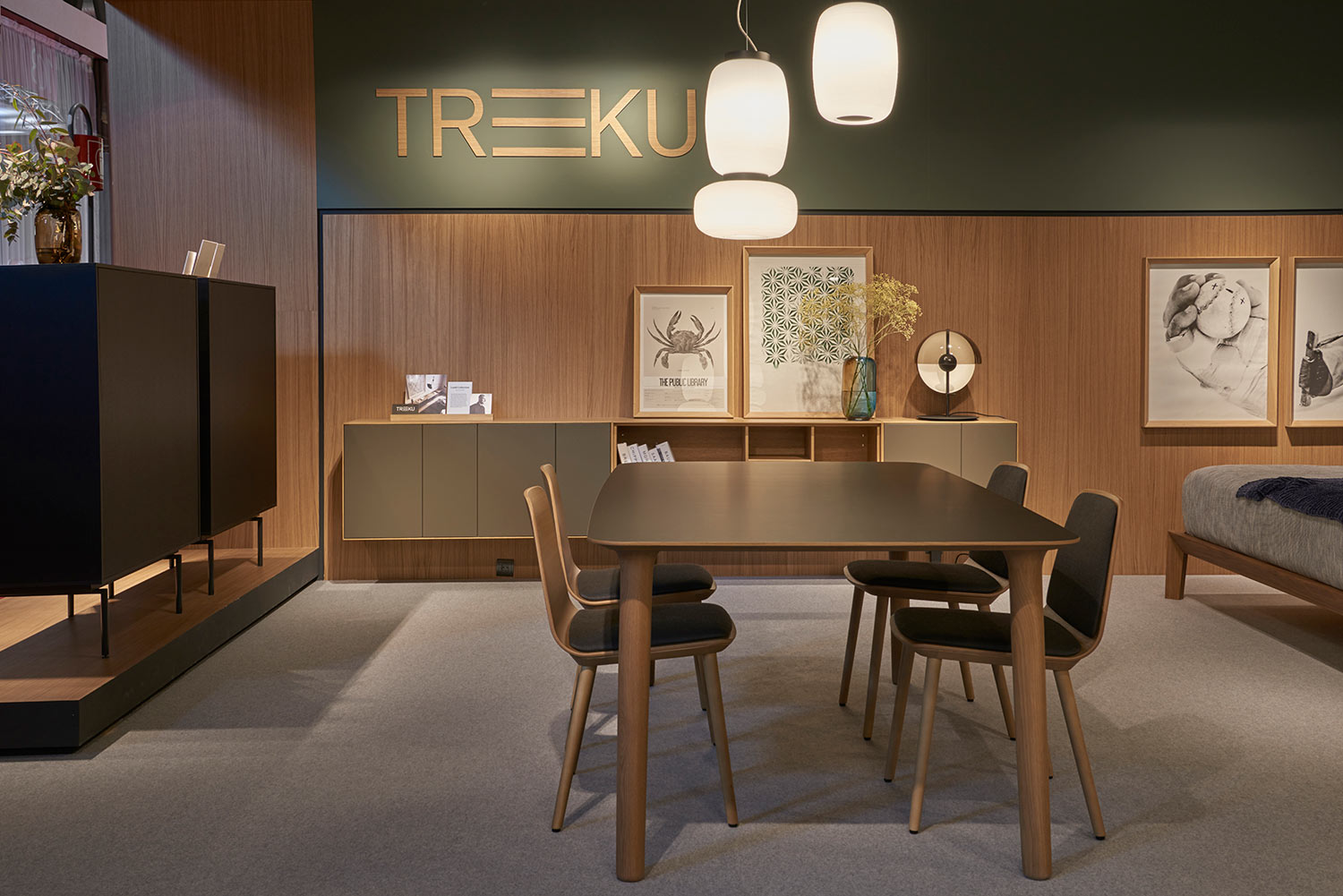
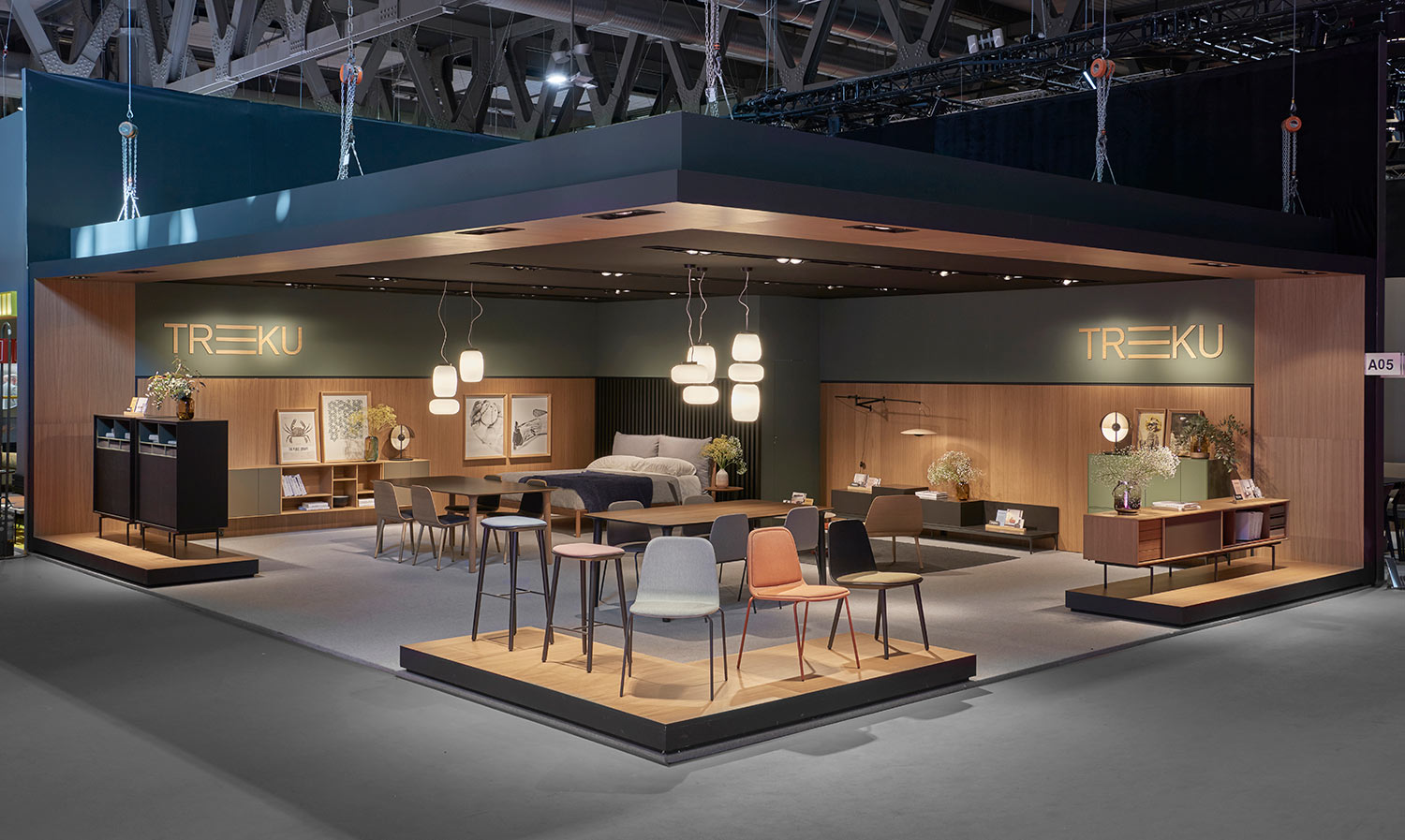
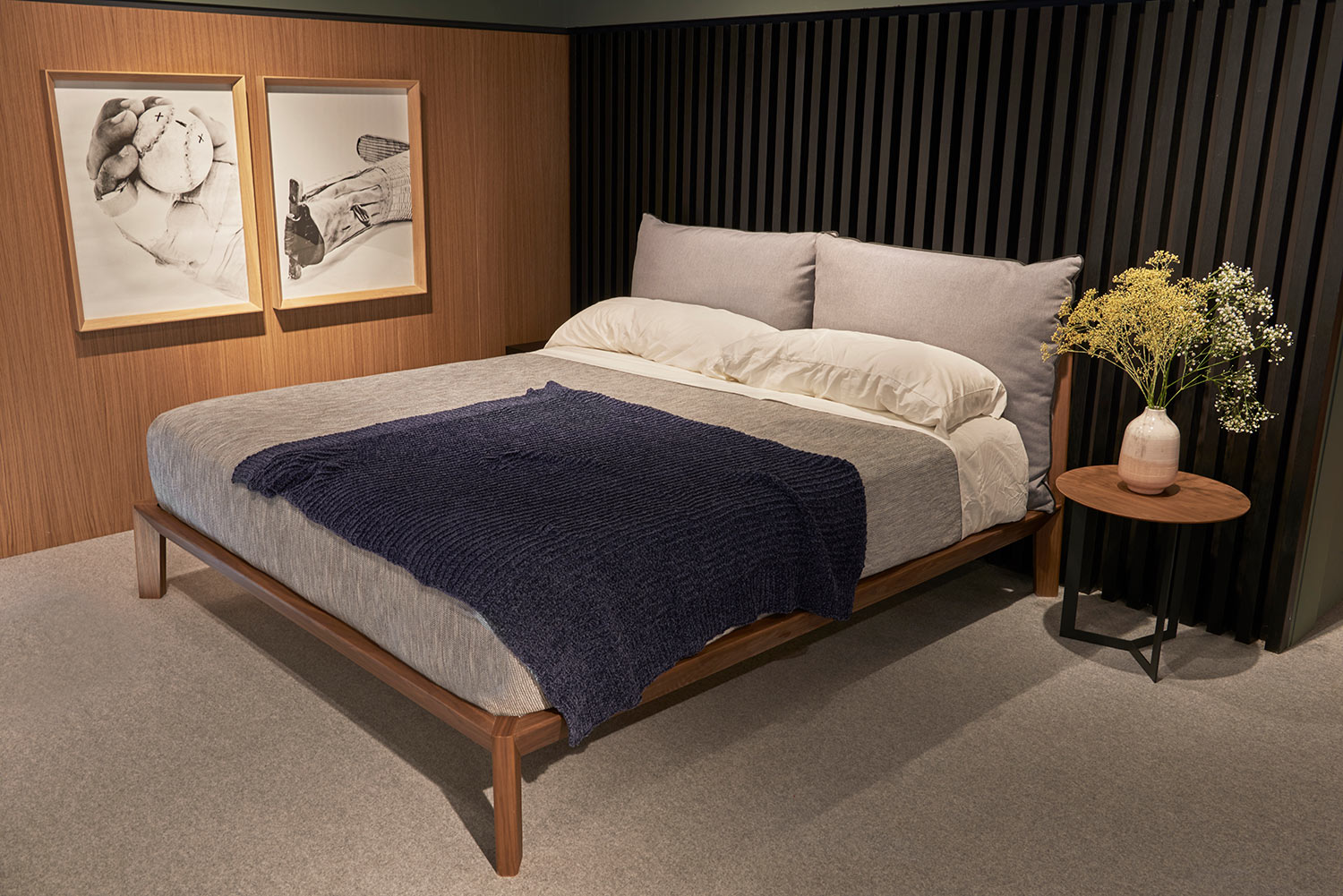
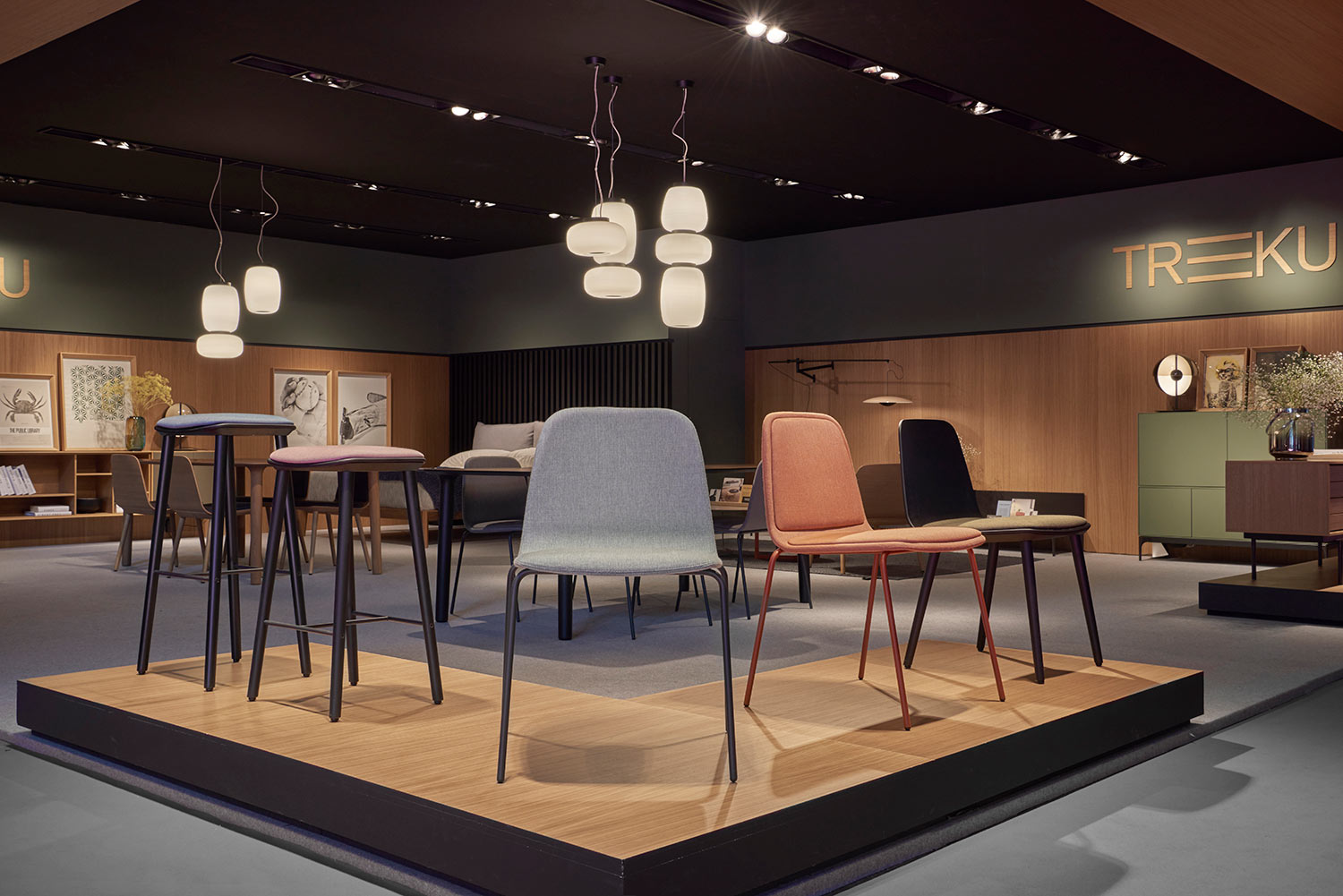
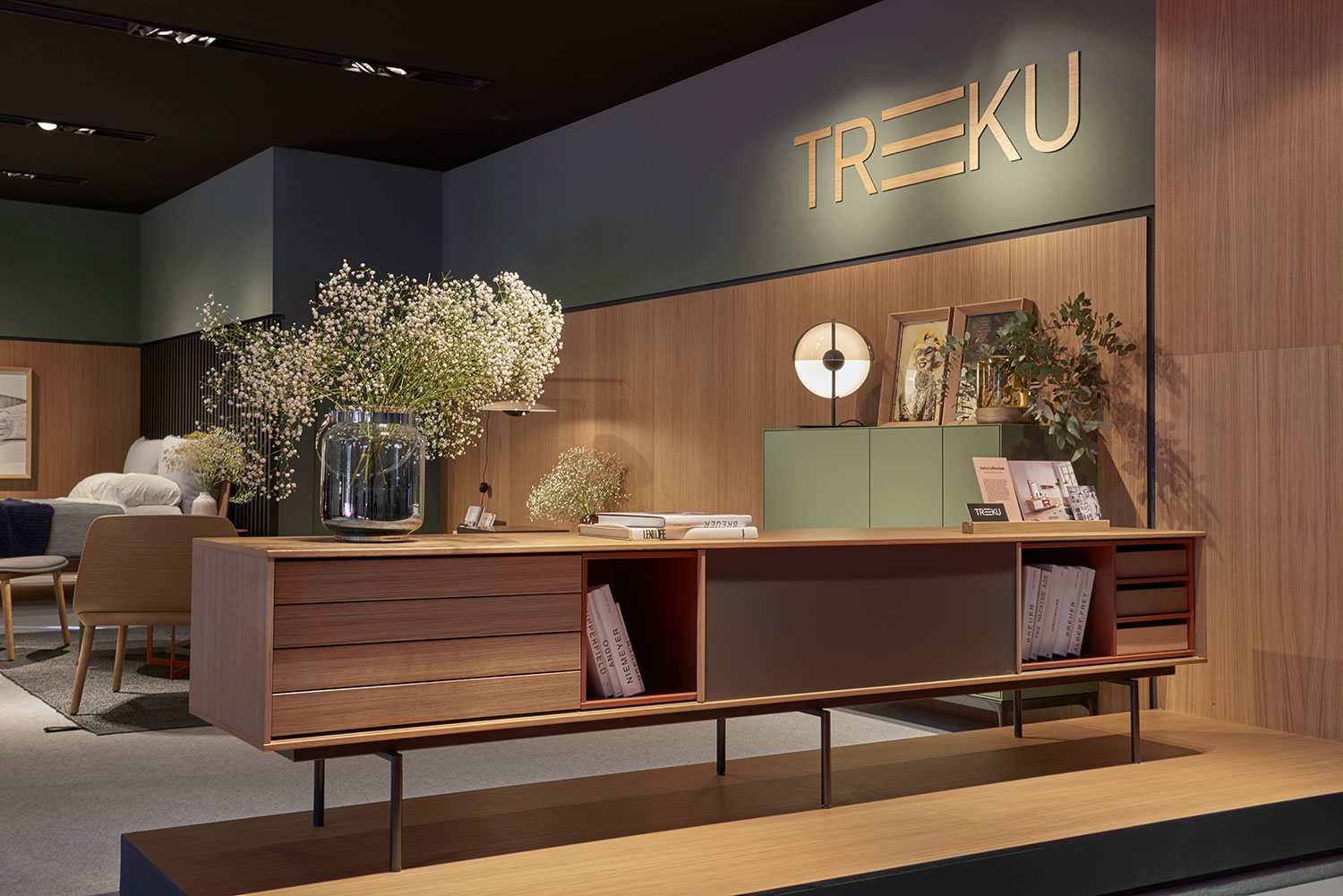
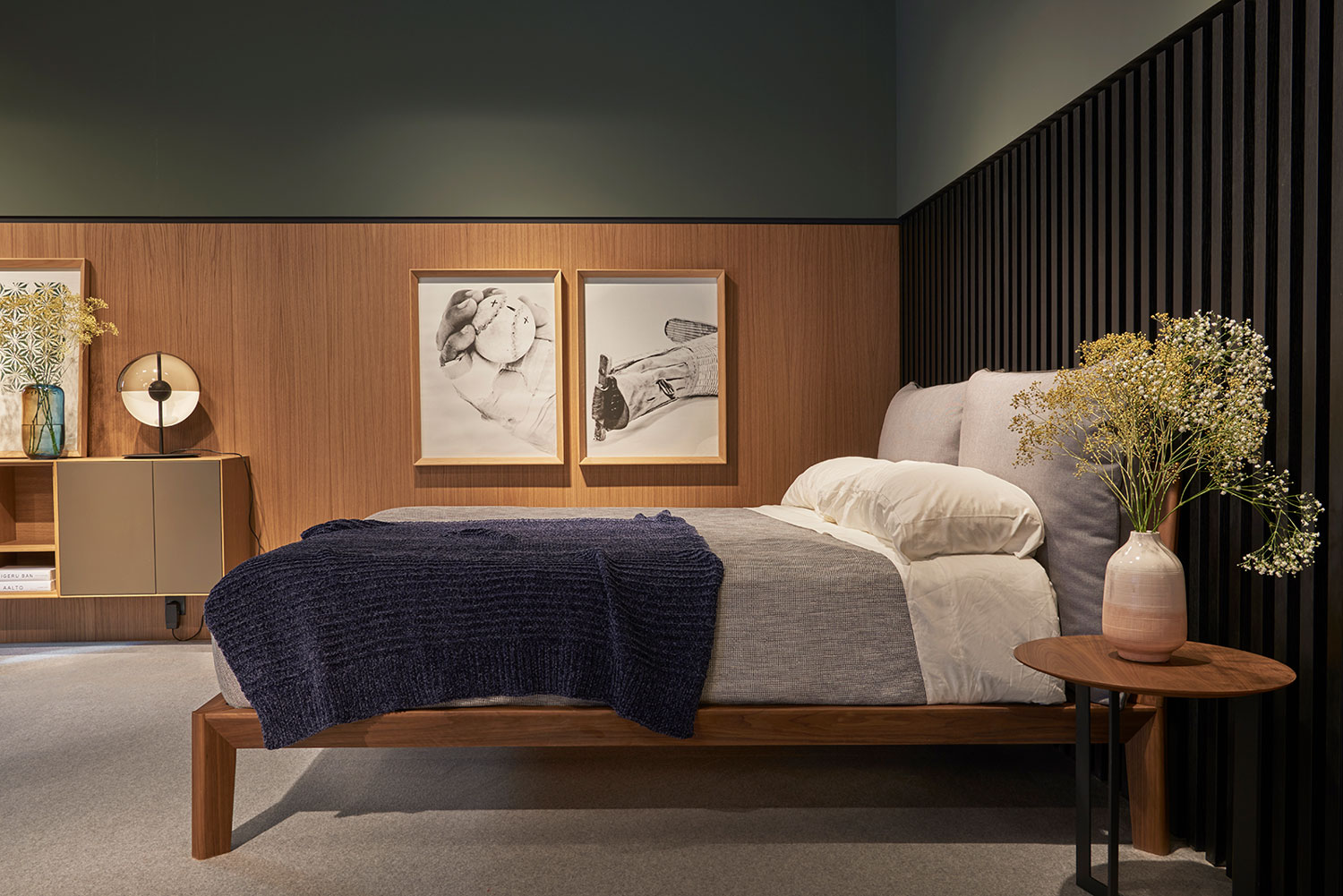
1. Selecciona haciendo click en el módulo que deseas modificar.
2. Selecciona de la columna derecha el acabado que deseas aplicar.
1. Haz click sobre la pared para poder modificar los acabados de la escena.
2. Selecciona de la columna derecha pared o el suelo y escoge el color o material que deseas aplicar.
Una vez has finzalizado con tu personalización, descarga la imagen o el PDF para que puedas enviárselo a tu distribuidor Treku más cercano.
Para volver a la web en la sección que estabas, haz click sobre el botón
“Go Back” en la parte superior derecha.
PHOTOGRAPHY:
Yosuke Kojima
We appreciated your positive feedback about our collection presented at the last Salone del Mobile in Milan! Check out some pictures of our booth.






PHOTOS:
(Right) Bora bed in natural oak with Lopi cushions in light colour.
(Down) Bel bed in walnut and black leather.
Everything begins in bed. Days, nights, weeks, weekends, Saturdays and Sundays. And everything ends in bed too. Days, nights, weeks… It does not matter what happens during the day, what adventures or unexpected happenings may occur, all the days of our lives have a common denominator: this discrete piece of horizontal furniture to which we dedicate an entire room in our home. Bed, my bed, our bed. Beds can be places of solitude or company, the setting for exhaustion, happiness, laziness and even breakfast. Breakfast in bed. Yes. Always. There are temporary beds which accompany us on our life’s journey: bunk beds at camps and youth hostels, motel beds and beds in luxury resorts, transatlantic ocean plane seats, which sometimes have to su ce, and cars which provide overnight shelter from a storm, an incident, or whatever. But you always, always, return to the bed you have chosen, to your main bed, your home bed. Your real bed.
You may change the mattress or the pillows. You may change the sheets in winter or summer. You may choose the warm side or the cold side; you may sleep face down or face up, with the curtains open or drawn. But the bed remains. Home is where we keep our books. Home is also where our bed lives. We read a lot in bed, to then dream about what we’ve read. But we can also dream without ever opening a book, because the bed doesn’t care.
Groucho Marx wrote an entire book (a slim volume, but a book nonetheless) about beds. He called it (obviously) ‘Beds’ and filled it with memorable phrases such as ‘a thing that can’t be done in bed isn’t worth doing at all’, ‘I spent the sixteen happiest years of my life in bed’, and ‘in bed we’re all the same’. Happy dreams, happy choice of bed.

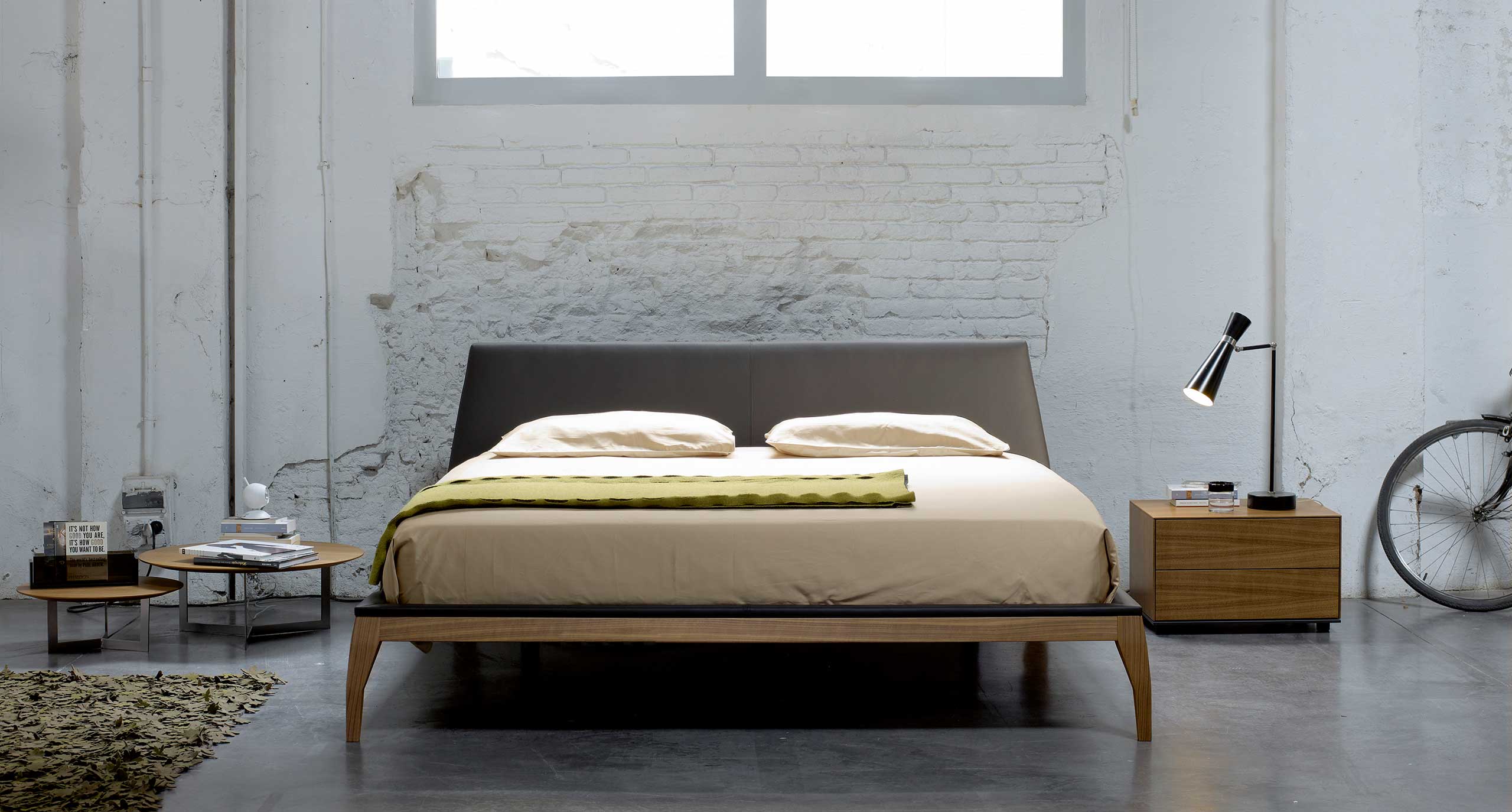
PHOTOS:
(Right)Iñigo Etxebeste from Treku, Francis Gainzarain from Marina Diseño and Kiyomi Higuchi from Design Within Reach.
The world changes every minute, but design, good design, remains the same. This equation involves not only designers and producers, but distributors also, that thin yet vital thread which connects each piece of furniture with its potential new owner. Right from the start, Treku has always been rmly committed to its distributors, to their role as ambassadors for the brand and to their ability to contribute added value.
In addition to their professionalism (which stems from their passion and experience), their ability to select the best pieces from the huge range of furniture items available in the world and their expertise in assembling them, retailers also o er customers their rst contact with the product. In other words, they enable customers to touch, feel and visualise in three dimensions the shapes and volumes of a piece of furniture that has been designed to occupy and enhance a particular space. Like good wine, good movies and almost everything else that makes us feel happy, good design is capable of rendering cultural barriers almost imperceptible. Proof of this is Treku’s international presence and the bonds of brotherhood that link one customer in San Francisco with another one in the Basque Country, simply as the result of them both having chosen a particular piece from the same collection to adorn their home.
Francis Gainzarain, owner and director of the Bilbao store Marina Diseño, is well aware of the ongoing process of change in which we are all immersed. Not only has he witnessed the startling evolution of his own city (his store
is located just a ve-minute walk away from the Bilbao Guggenheim Museum), he has also experienced the drastic change that has occurred in the designer furniture industry. He believes that the most notable change that has occurred since he opened his business in 1979 is related to customers: ‘today they are much more demanding, and in general, much better informed.’ This means that the role of the distributor has also had to evolve, and today retailers must work harder, have better instincts and be more honest when selecting what to stock from the immense, globalised offer available.
But the ultimate aim remains the same: to o er a (nearly) perfect range of furniture to customers. Kiyomi Higuchi is storage buyer at Design Within Reach, a North American designer furniture company with over thirty stores across most of the country’s main cities. For the past fteen years, DWR has been Treku’s distributor in the US, a key part of our e ort to convey the philosophy underlying the Zarautz brand to a country that is, on the surface of it at least, so different from any European nation.
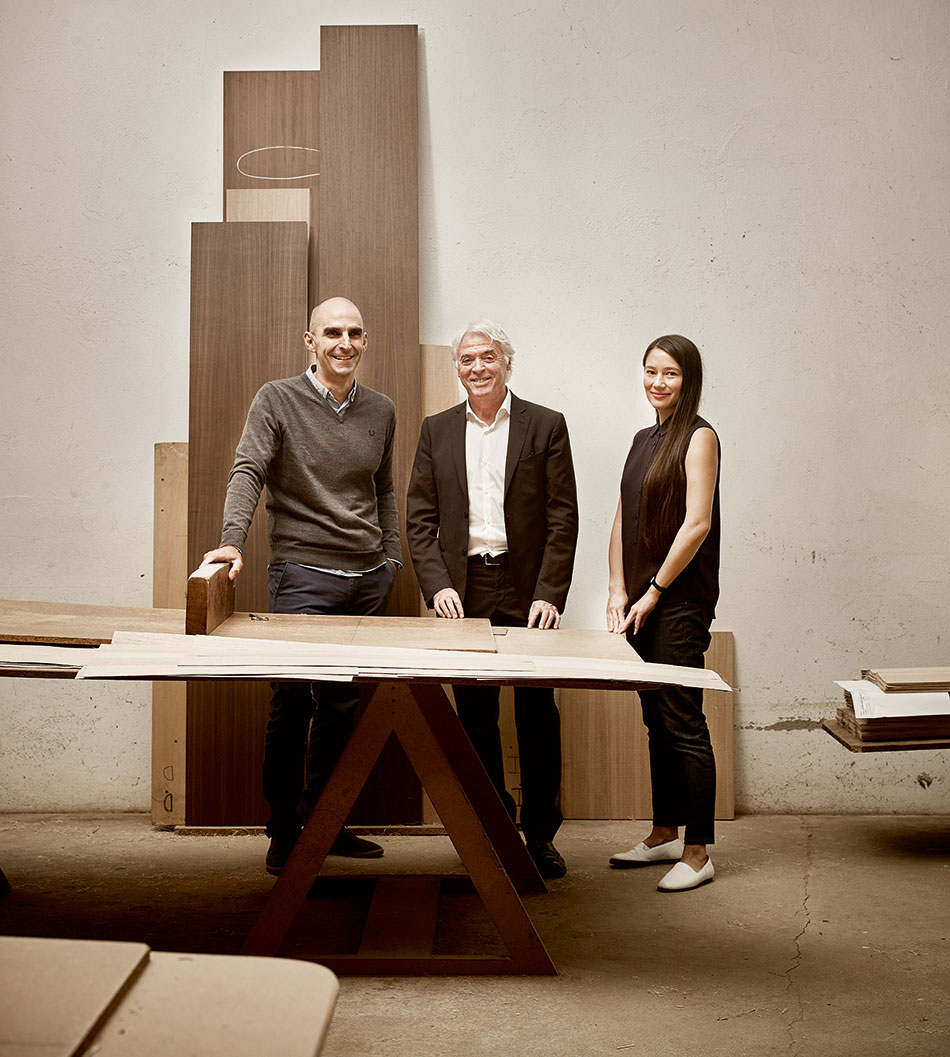
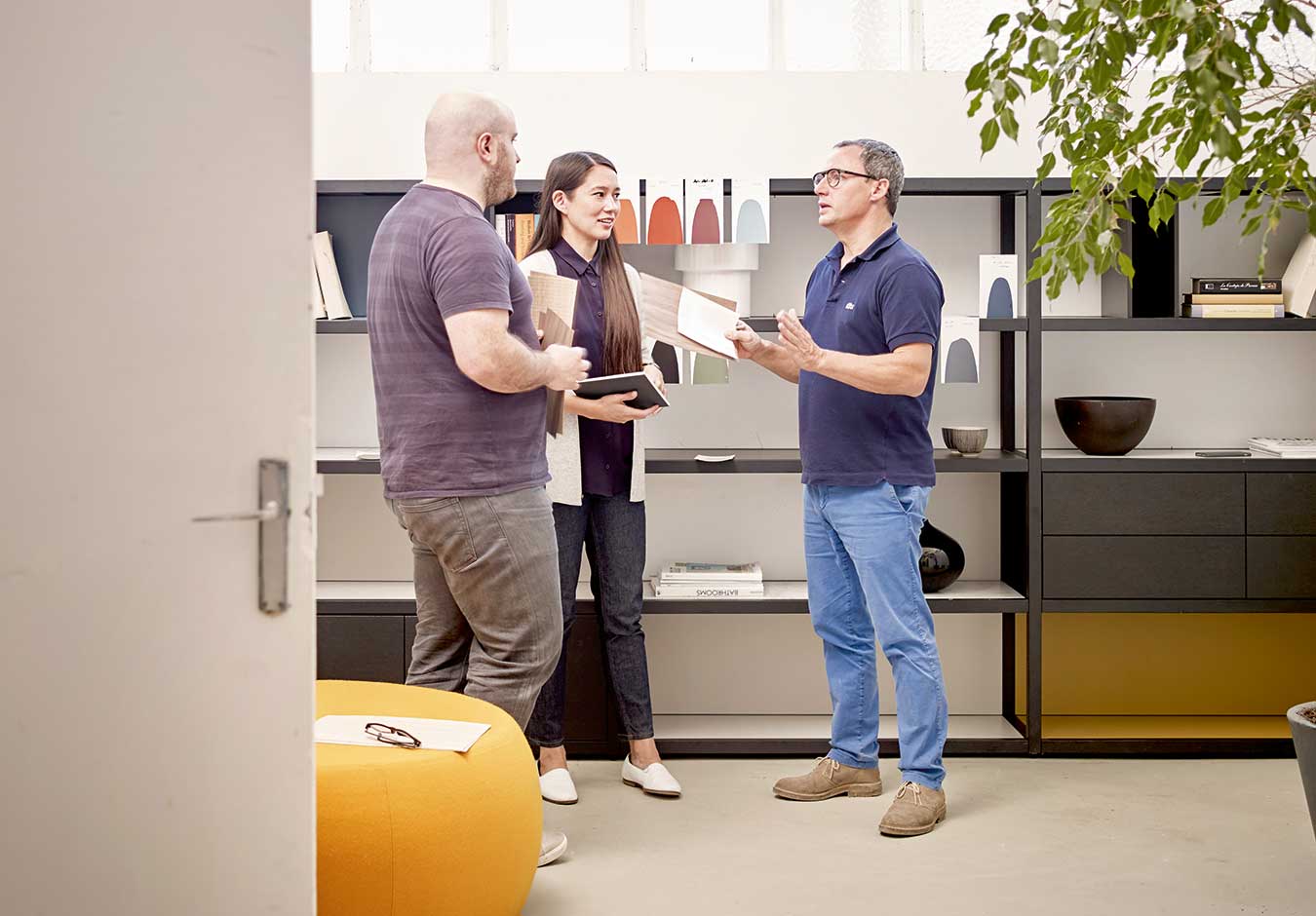
PHOTOS:
(Top) Kiyomi Higuchi, Jean Louis Iratzoki and Ander Lizaso choosing colours from the Kai collection for the DWR premises
(Right) Images of DWR, home of the best design.
Nevertheless, there is an exciting niche in the American market for high-quality furniture, partly thanks to Design Within Reach’s efforts in disseminating the advantages of good design. Kiyomi does not see the Atlantic Ocean as a cultural barrier: the ‘refined simplicity’ of the Treku look is more than capable of resonating with avid collectors of quality furniture, regardless of its country of origin.
Iñigo Etxebeste, sales director at Treku, is more than familiar with this idea. ‘The differences in taste which exist today between France and South Korea are smaller than those which existed twenty years ago between the Spanish cities of Galicia and Valencia.’ And indeed, it is no coincidence that
the brand sells in over fty countries, all over the world, and has caught the attention of not just the general public, but of experienced distributors also. The world has changed, it has become smaller and more globalised, but at the same time, the barriers which once separated di erent tastes in the eld of designer furniture have become increasingly more tenuous.
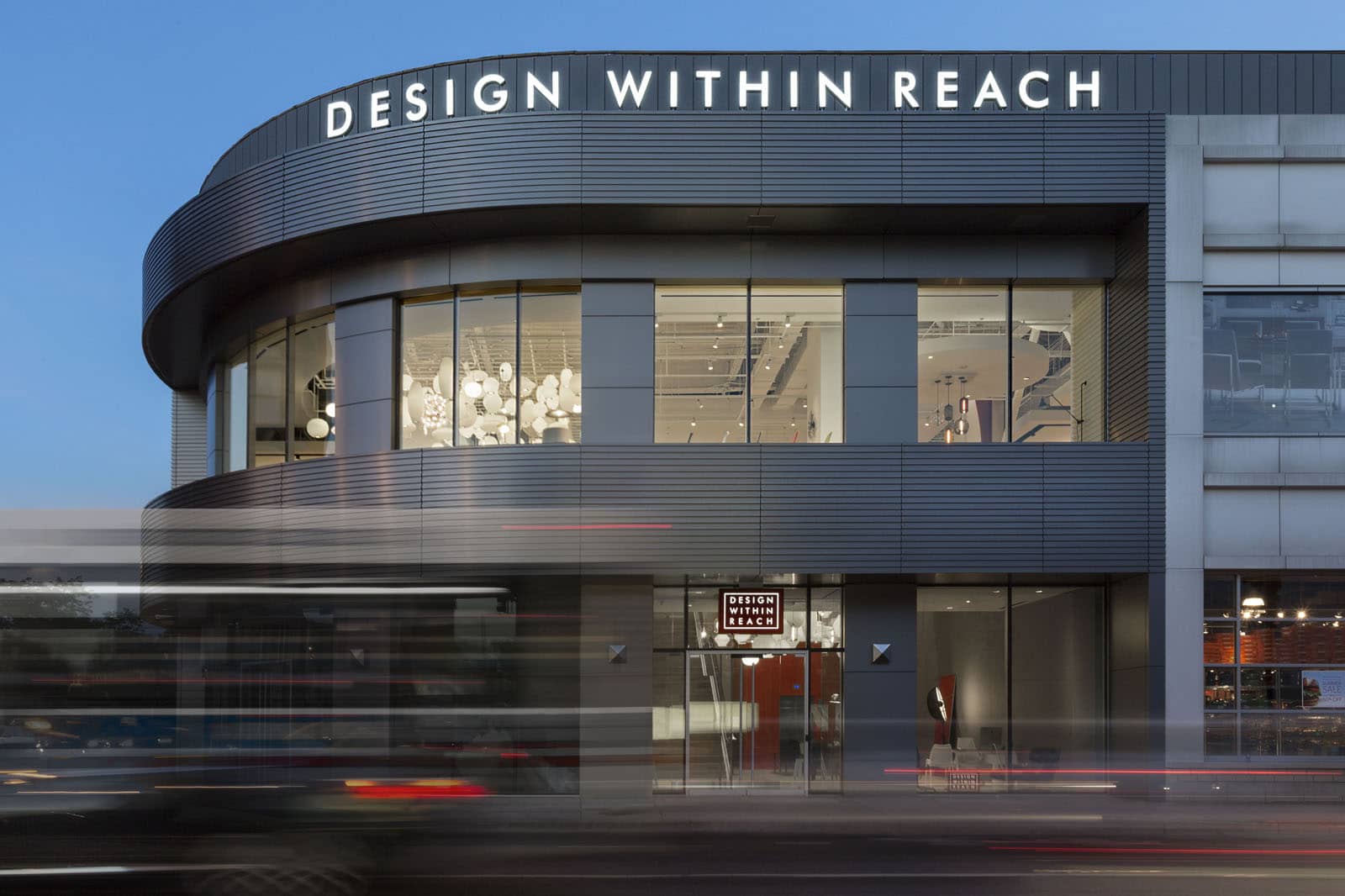
PHOTO:
(Right)Ibon Arrizabalaga and Silvia Ceñal
on a wooden table belonging to
our Aise collection.
Monday morning. The rst autumn frost. We are sitting around a table in the Treku o ces in an eminently rural setting just three kilometres from the Cantabrian Sea.
The table in question is a Treku Aise, with metal legs. The encounter is somewhat paradoxical because at one end of the Aise is Ibon Arrizabalaga, the designer who came up with the idea and then turned it into a reality, and at the other end is Silvia Ceñal, also a designer and the creator of another table for the Zarautz rm, called Basoa. We are obviously here to talk to them about tables, these pieces of furniture that are born from the union of a at top and legs. So simple, yet so complex.
The philosopher Gustavo Bueno once wrote that tables are ‘ oors for hands’, a space created to enable our upper extremities to express themselves, or to simply rest. Tables are a canvas on which to live our creative life, and our everyday life. Tables are also a startlingly simple design that even a child would be able to create. And yet, every year, new designs are born with new nuances. Silvia’s Basoa table was created in a burst of inspiration. ‘You pick up a piece of paper, a pencil, and you start with a line; then you add another…’ No pressure, no impulse to ll a gap in the market, no speci c destination in mind. Created for the mere pleasure of it. Later on, a prototype was produced for her exhibition and it was this that seduced Treku and convinced the brand to include the table in its collection.
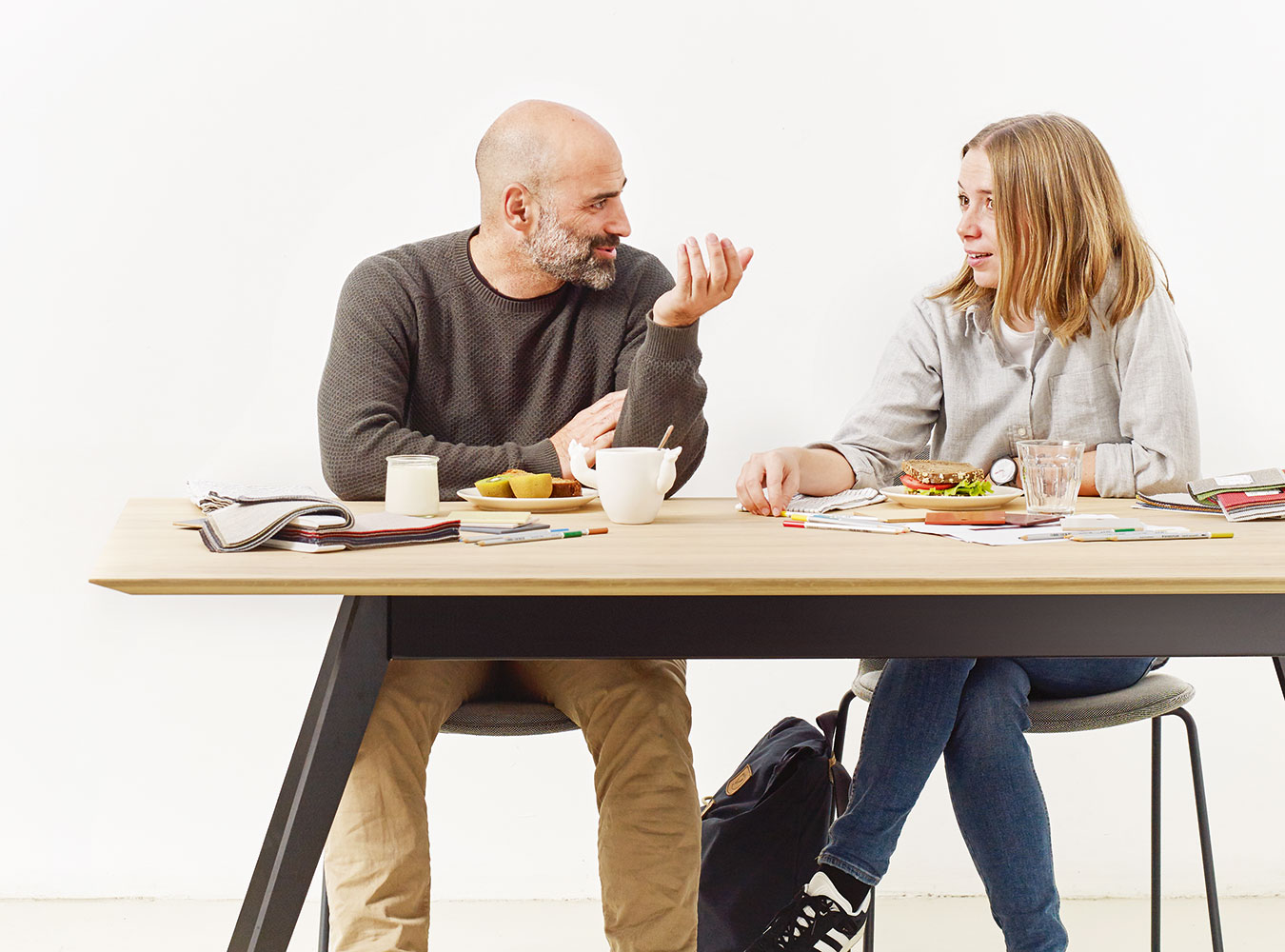
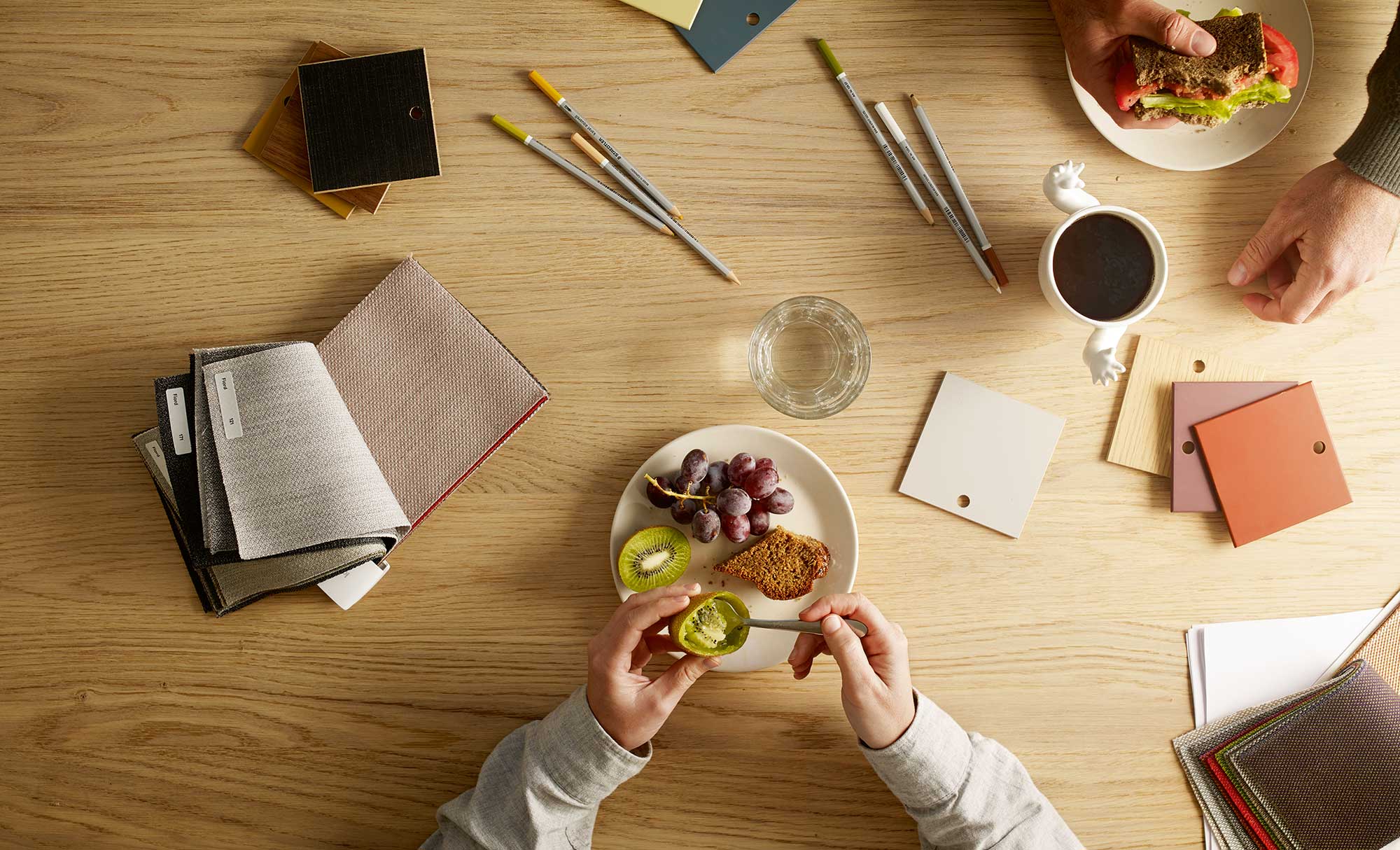
PHOTOS:
(Top) Detail of the Aise table with
solid oak countertop
(Right) Wooden table belonging
to our Aise collection
The inspiration for the name Basoa (which means forest in Basque) came from the large pine trees that cover the sand dunes in Landes, in the south of France. ‘I like working on pieces with a lot of detail. In the case of Basoa, these details can be found in the crosspieces and the way in which they join together.’ The Aise table, on the other hand, was created in an almost diametrically opposed fashion. Ibon Arrizabalaga is a Treku designer who is extremely familiar with the rm’s pro- duction processes and is well aware of the direction in which designs should be heading.
Initially, Aise was conceived as an o ce desk with a Treku touch: visually light and eminently contemporary, with metal legs to guarantee stability. It was created to order, a design rooted in a speci c set of requirements. But it proved hugely successful. And not only as a piece of o ce furniture. Orders soon came in requesting it for the home environment also. ‘We evolved the design towards a warmer, more homely look, replacing the metal legs with solid wooden ones.’ Basoa, born free, and Aise, a made-to-order design which then chan- ged course, exist side by side in Treku’s new collection. They are not just any old tables, simple yet complex, they are the future oor for thousands of hands.
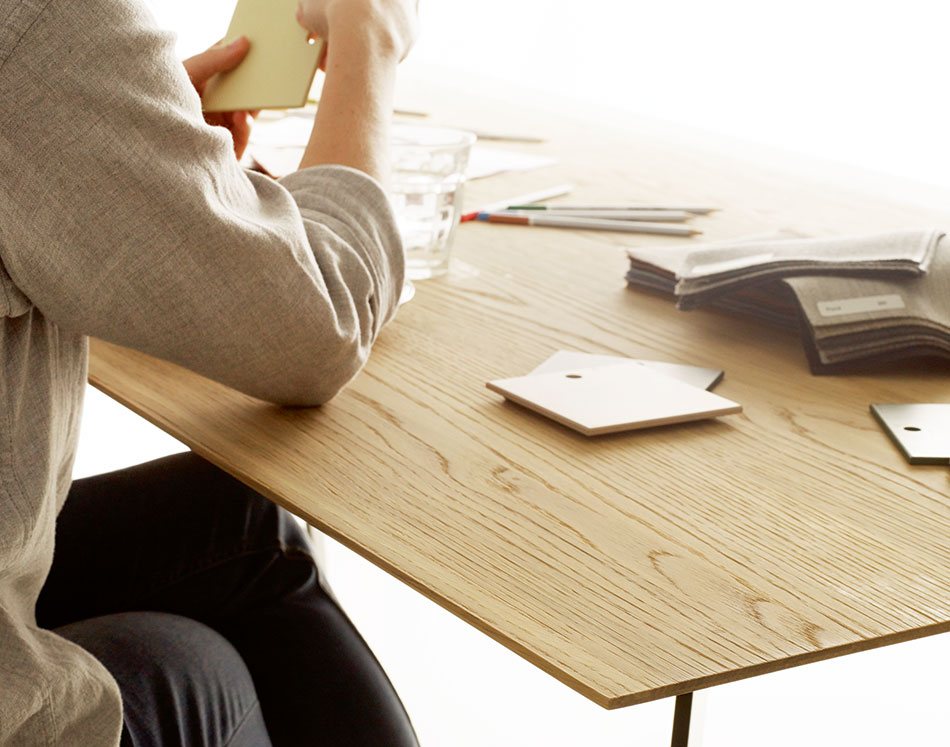
PHOTO:
(Right) Pollarding was a forestry technique used in the shipping industry to alter the growth of trees in order to get the most out of the wood.
In 1947, a local from Zarautz, a small coastal town in the Basque Country, opened his own carpentry workshop. His name was Jesús Aldabaldetrecu, he was 36 years old and had been working in the field since he was a boy. Jesús was just another link to a woodworking tradition which dated back more than five hundred years in this neck of the woods in the province of Gipuzkoa. While most of the coastal town of the XVI century were busy fishing at sea, the people of Zarautz were becoming specialists in the construction of small fishing boats and traineras or rowing boats – speedy long boats which were fundamental in whale hunting. The town achieved worldwide fame for its craftsmanship. The profound economic transformations occurring in Europe in the mid-XIX century brought with them a decline in traditional riverside shipyards. Crisis loomed on the horizon.
A door which had been open for centuries started to close, but various windows were simultaneously flung open. One of these windows was to tourism: at the same time as the industrial revolution, sea and beach tourism became popular on a section of the Cantabrian Sea. Zarautz, with its stretch of beach over 2 kilometers long, was one of the places that Royalty and the bourgeoisie of the time chose to partake in the famous activity known as baños de ola – jumping through the waves while holding onto a rope. The shipyards, where boats were built for centuries, became home to the creation of luxury furniture. Almost 70 years after being founded, the company Muebles Treku remains in the hands of Jesús Aldabaldetrecu’s descendants. Times and designs may have changed, but the handmade resilience and tradition still remain.
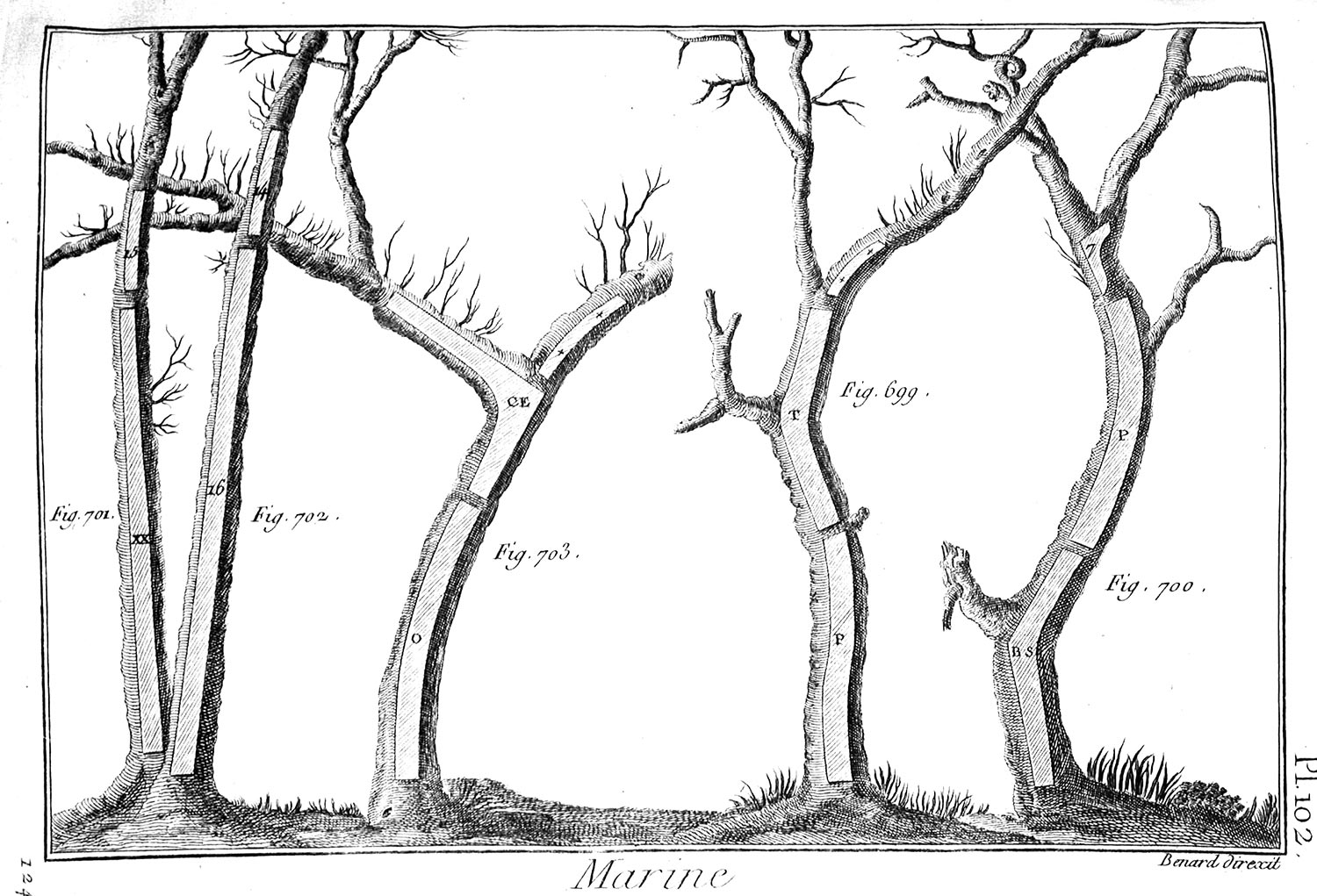
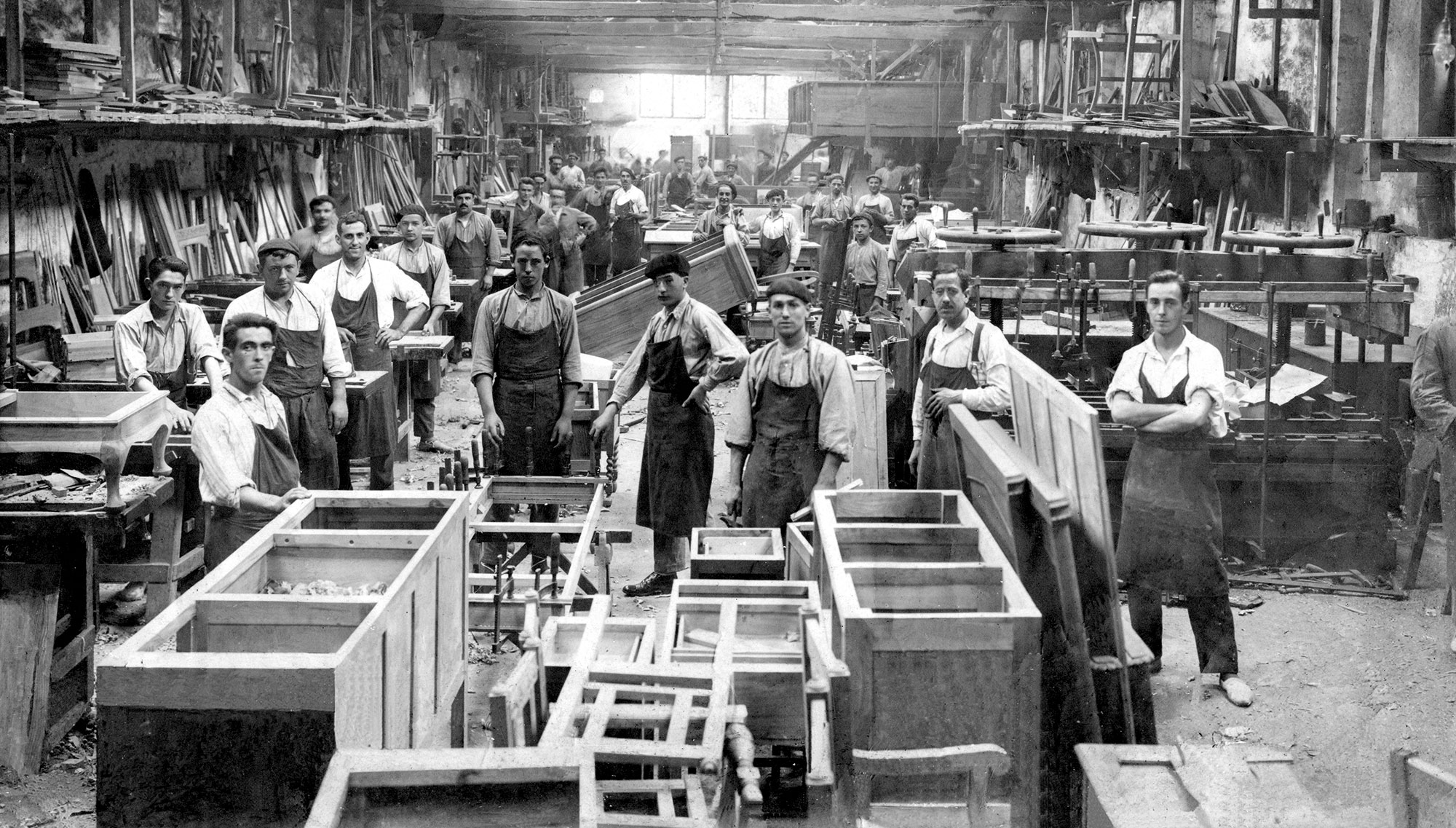
PHOTO:
Xabier and Gorka Aldabaldetreku,
grandchildren of the founder of
Muebles Treku and current directors
When dawn breaks in Zarautz, the rays of the sun take a few more minutes more to fall on the Olaa neighbourhood. The light uses this time to break through the hills among which this entirely rural spot is nestled, just two kilometers from one of the Basque Country’s best-known beaches. Olaa bears no resemblance to touristy Zarautz. It is covered in green pastures still grazed by livestock and is scantly inhabited by a dozen evenly-scattered homesteads, the characteristic Basque farm. A small freshwater stream called Olaa, the very same that gives the place its name, forms its backbone as it crosses the neighbourhood, allowing the road to run by its side.
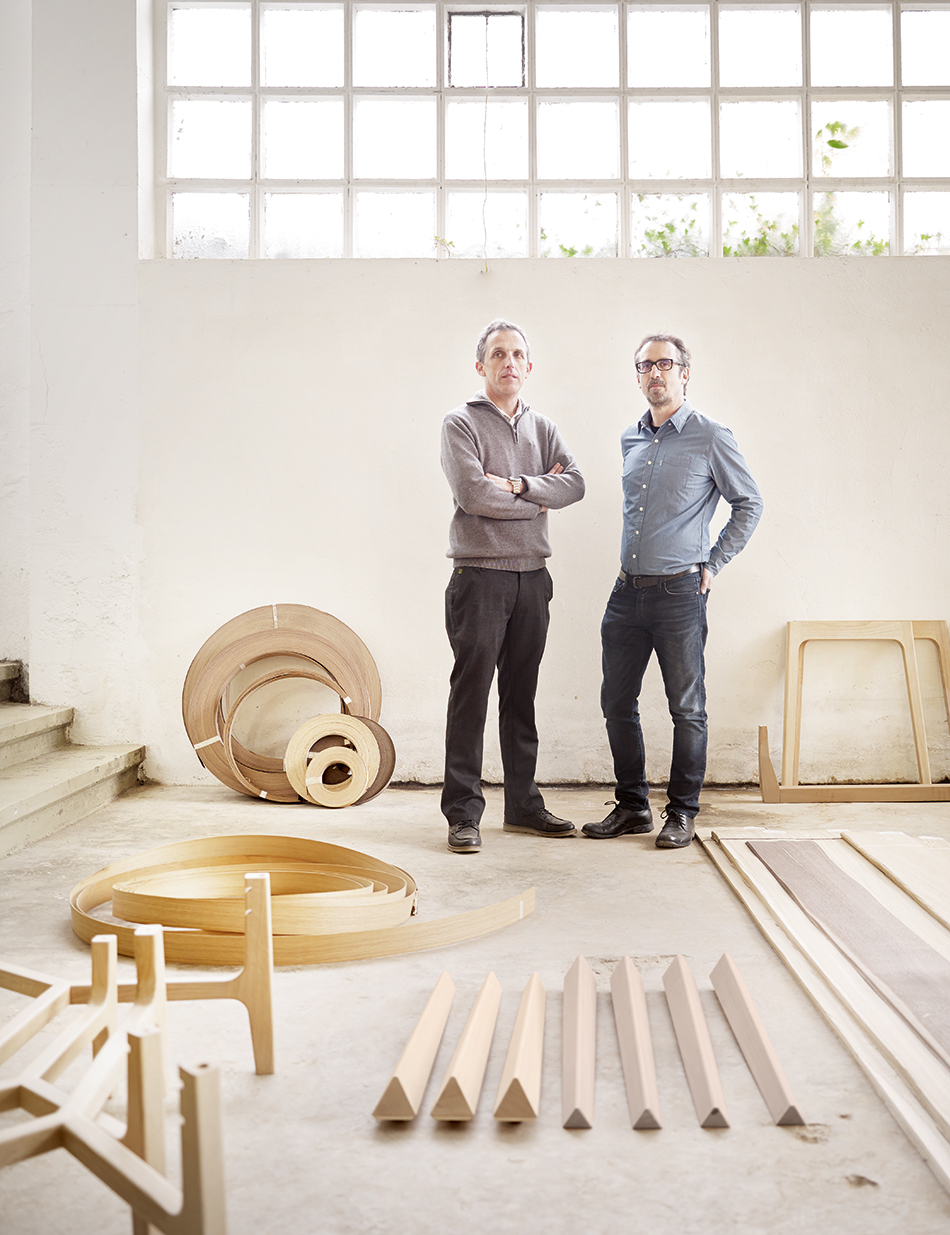
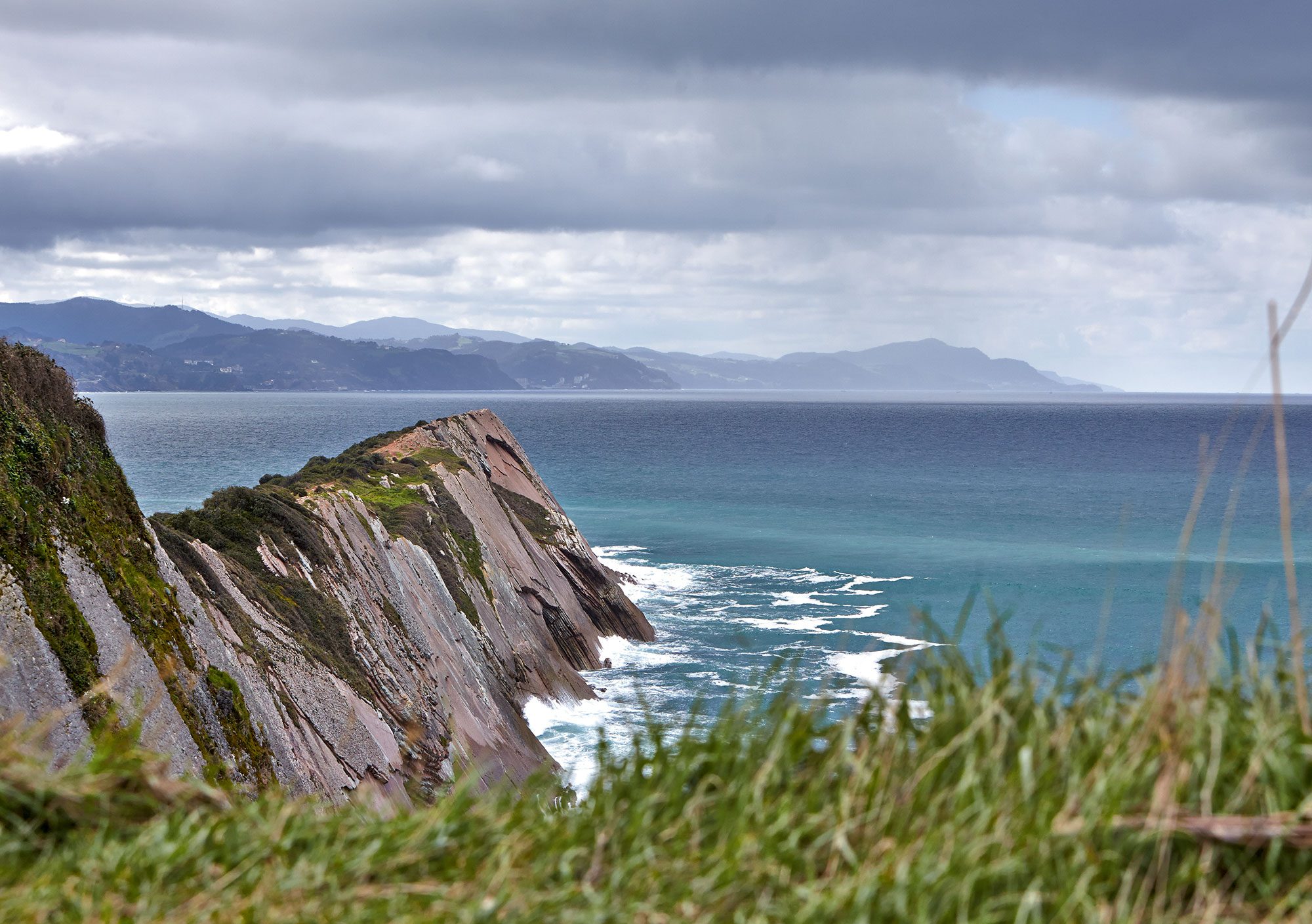
PHOTO:
(Top)The Flysch of Zumaia,
which reveals more than
60 million years of the
Earth’s history.
This is home to Muebles Treku’s factory, a building which awakens at the same time each day when an operator turns on the furnace, feeding it with discarded wood from furniture construction, and starts up all the machinery. An hour later, when the rest of the workers arrive, the production cycle is already warmed up and ready to go so they can get started on their work.
It hasn‘t always been this way because Treku wasn’t always there. The company was established in 1947 in a modest industrial suburb very close to the Zarautz’s historic quarter by Jesús Aldabaldetrecu, the aitona (‘grandfather’ in Basque) of the current managers.
His vocation was making bathroom furniture for the inhabitants of Zarautz but people soon started to call for his services from towns all over the Basque Country. Although Jesús created classic and simple furniture, he was highly valued by clients who appreciated his conscientiousness, his integrity and his taste for details.
After he retired, his children expanded the business: they transformed the small carpentry workshop into a modern factory and began selling their products across Europe. Treku grew and moved to a new 12.000 square meter factory in the Olaa neighbourhood of Zarautz, and with it emerged the rst signs of the subtlety of the furniture design which today characterises all their collections. The Treku of today is the lovechild of yesterday’s experience and tomorrow’s ideas. “Modern machinery might take up most of the factory’s surface, but ngers and eyes are still at the heart of the production process”. It is these ngers and eyes which select knots and grains in the oak veneers; which are responsible for making a piece of furniture gleam the best ochre which characterizes walnut; or which are capable of distinguishing the pink hues that American oak will give out in years to come as it ages.
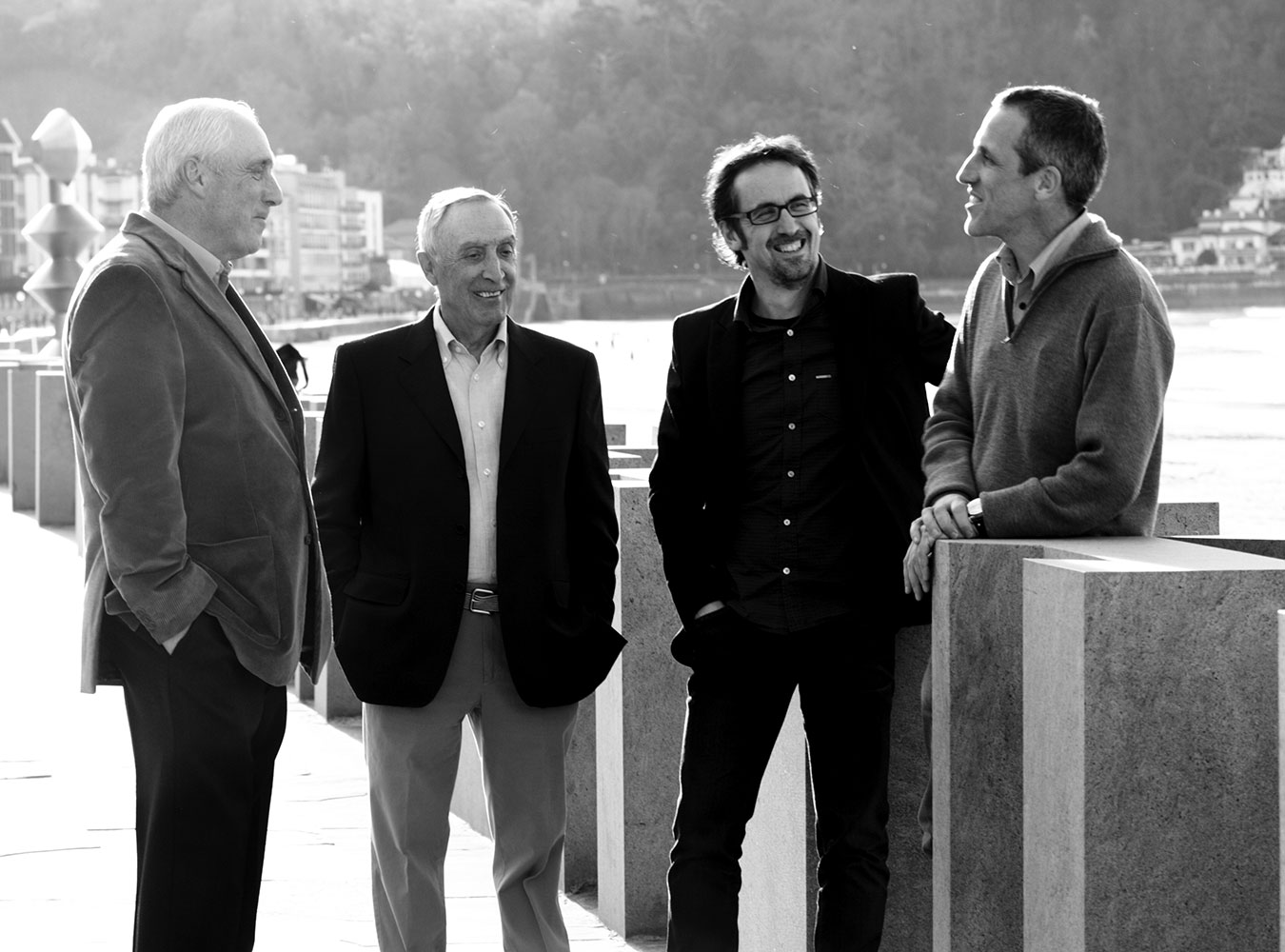
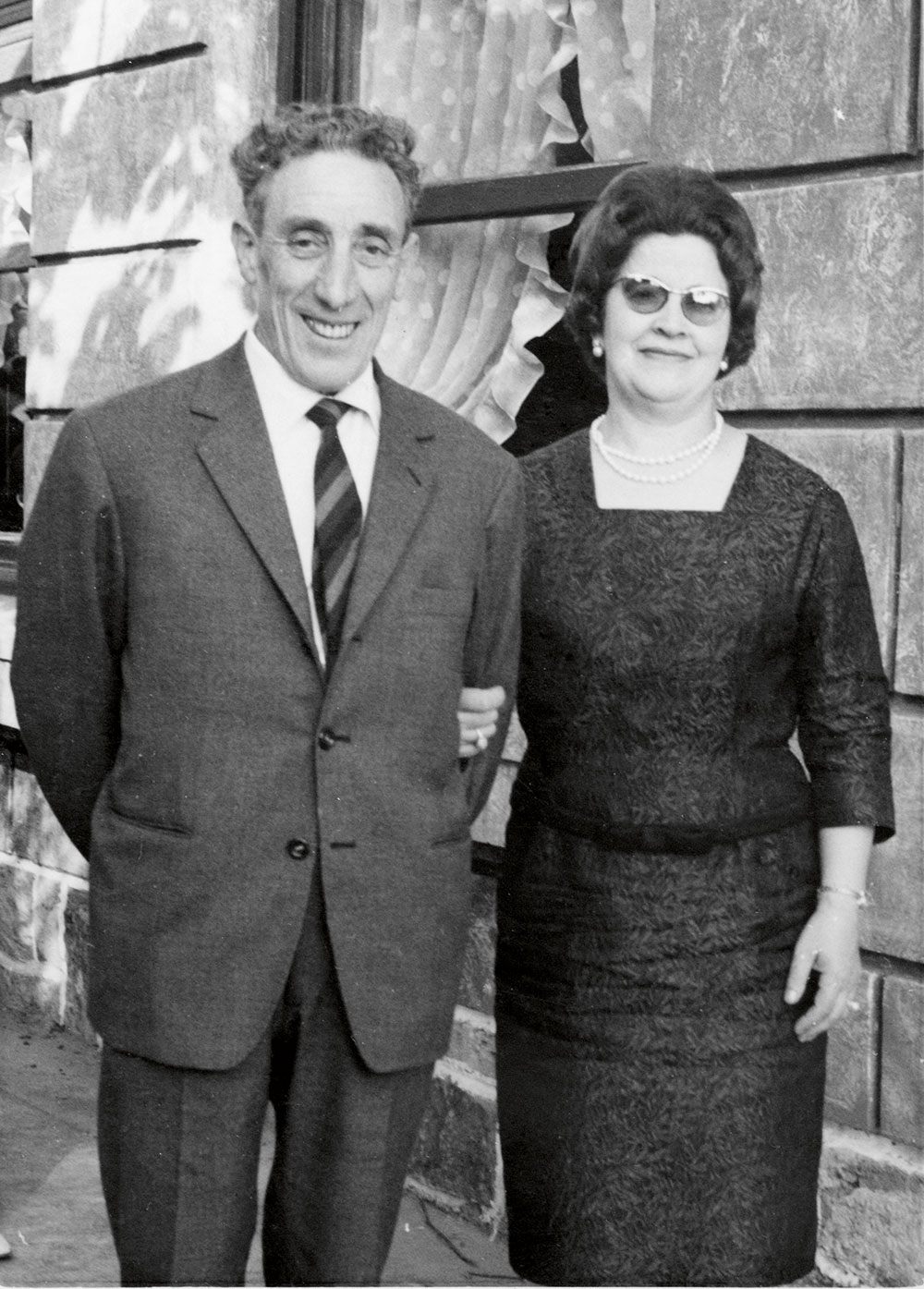
PHOTOS:
(01) The second and third generation
of the Aldabaldetreku family.
(02) Treku founder Jesús Aldabaldetrecu
with his wife Jesusa.
The Treku of today is technology and, above all, craft, a wood craft which, for over 500 years has been in the DNA of the carpenters of Zarautz. The Treku of today are the grandchildren of Jesús and its team is made up of carpenters, designers, sales reps and managers. In a corner of Treku’s offices, filled with the constant aroma of co ee, sits a wooden table of barely a square meter in size. It has no drawers nor additional units. It has a rectangular surface, smooth and austere, on which the accounting of days gone by was done; the painstaking work of the company’s gures and balances. It has been out of use for many, many years but is kept as a nostalgic reminder of what the company once was.
Not far from this table is a world map with small ags pinned on it to mark the countries where Treku distributes its creations. There are more than fty pins, representing the internationalisation achieved in the past few years. If these pins were to be joined up by an imaginary thread, it would be possible to do a complete loop around the world. This loop began in 1947 with Jesús Aldabaldetrecu, the carpenter grandfather. It is an odyssey whose course is chosen by contemporary and everlasting furniture produced in this rural neighbourhood of Zarautz where dawn always breaks a few moments later.
